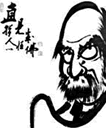Hi all,
Hope everyone is well. I was thinking, if We all have Buddha nature and coming to the realization of that is the essence of Buddhism, why did our past Buddhist monks, priests what have you do things like sit in front of wall for years, starve themselves and put themselves through masochistic actions in order to realize this. In Dogen's time I believe this was the normal practice and please correct me if I'm wrong. Do other schools of Buddhist thought still practice similar endeavors?
Hope everyone is well. I was thinking, if We all have Buddha nature and coming to the realization of that is the essence of Buddhism, why did our past Buddhist monks, priests what have you do things like sit in front of wall for years, starve themselves and put themselves through masochistic actions in order to realize this. In Dogen's time I believe this was the normal practice and please correct me if I'm wrong. Do other schools of Buddhist thought still practice similar endeavors?






 By no means I am encouraging people to do the same and if you want to do any extreme practice,
By no means I am encouraging people to do the same and if you want to do any extreme practice, 

Comment